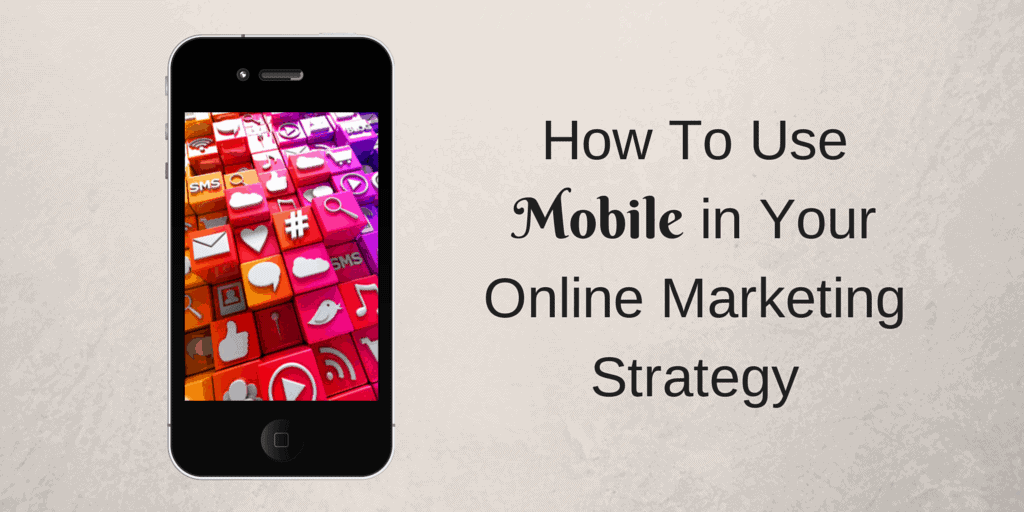Mobile devices have the capability to drive phenomenal growth in most businesses. They are portable, personal, and possess a strong impact. Marketing analysts have projected mobile marketing to become one of the fastest growing features of online marketing, second only to social media.
Since mobile devices have freed social media from the shackles of a desktop, the possibilities for interaction are unlimited. Social life, information, education, and even retailers can be reached on the move. Due to the proliferation of online interactivity, marketers can target people at any given moment and time. Many new apps have been rolled out in collaboration with the social networking giants, to target every segment of the online audience.
Reaching your Customers
Mobile marketing is a concept evolving at an incredible rate. It has become a major communications channel for reaching your existing and potential customers. Mobile phones have become the most direct and personal of all forms of media. Never has it been easier for the customers to reach their service providers and offer their feedback on services and products. Similarly, businesses can directly provide information on their new products and services.
Create a Mobile Optimized Version of your Website
Due to the mobile web, significant online traffic has migrated from the desktop to mobile devices. Businesses without mobile-optimized websites are missing out on a huge amount of online traffic coming from mobile users. Due to the fast-paced nature of online surfing, businesses that still do not have mobile-friendly websites are losing potential customers to their competitors.
Tweaking Social Media Activity for Mobile Users
There are a few things you can do to stand out from the crowd on Facebook. Since the majority of Facebook users just read the headlines of posts, it makes it the perfect platform for you to send out your call to action with a link to your content. If your call to action can get the customer intrigued, you can increase the amount of exposure your content receives.
There is a primetime on every kind of media and social media is no exception. Post according to when your followers are active. Due to the huge amount of information flooding social media, the concept of going through old posts is completely nonexistent. Timing the post will ensure maximum traffic to your content.
Content Marketing and Social Media
There is a huge myth about social media marketing and content marketing being two completely separate things. For any mobile marketing campaign to be successful, it needs to incorporate a little bit of everything. Use social media to create awareness of your content and if your content can create some buzz among the online public, you will gain leads. Social media and content marketing are two different tools, but when these tools are incorporated together, you can utilize the true power of online marketing.
Mobile Apps
Every business needs a website these days and every website needs a mobile version. And since mobile apps have become increasingly popular all over the world, your business should have a mobile app as well. One of the best features that a mobile app offers is the option of ecommerce. With the recent innovations in digital payments, more and more people prefer online shopping and paying online without making use of credit cards.
QR Codes
QR codes can be used to look up a particular product without searching for it. Every smartphone can download a code reader. By putting up product codes on social media, magazines, and websites, a potential customer can scan the code and get every detail on the product or service.
Dyanmic QR Codes
Unlike traditional QR codes, dynamic QR codes give you the flexibility to change the destination URL without having to make a completely new QR code. Dynamic QR codes make it easy to track your QR code performance which can help increase engagement rates, attract new customers, and explain your product or service more effectively. By using a dynamic QR code generator, marketers can create more effective digital campaigns.
Location-based Advertising
By using location-based advertisements, marketers are using mobile apps to help their customers locate the shops and services they seek in their vicinity. Location-based services also provide a plethora of information on consumer behavior on travel patterns, preferences, and lifestyles of their customers, which can be used to create offers and marketing messages that are more likely to improve consumer engagement.
Ecommerce
The 2013 mobile ecommerce market was valued at around $43 billion, with mobile traffic making up nearly 50% of the traffic on websites. These metrics hint towards the size of the opportunity available for marketing teams. Email optimization for mobile devices has become a must, since email drove almost 26% of ecommerce sales in the year 2013, with tablets contributing 23%, compared to the dwindling numbers of desktops which came at around 21%. Thus investing in ways to make it easier for users to engage in email content on mobile devices will most likely pay off.
Direct traffic to websites and through mobile apps has been increasing and has become a significant source of sales for businesses through mobile phones. A third of the sales, 32%, were coming directly in 2013, in contrast to those from search engines through mobile devices, which contributed 16% of the total sales. Because many mobile users are bypassing the search engines and directly going to the source, it is crucial to ensure all landing pages are optimized for access through the mobile web, and that the checkout process is completely flawless on all types of devices.
If you’d like help with your mobile marketing strategy, fill out our contact form today. We’d be happy to develop a plan to fit your company’s needs.







